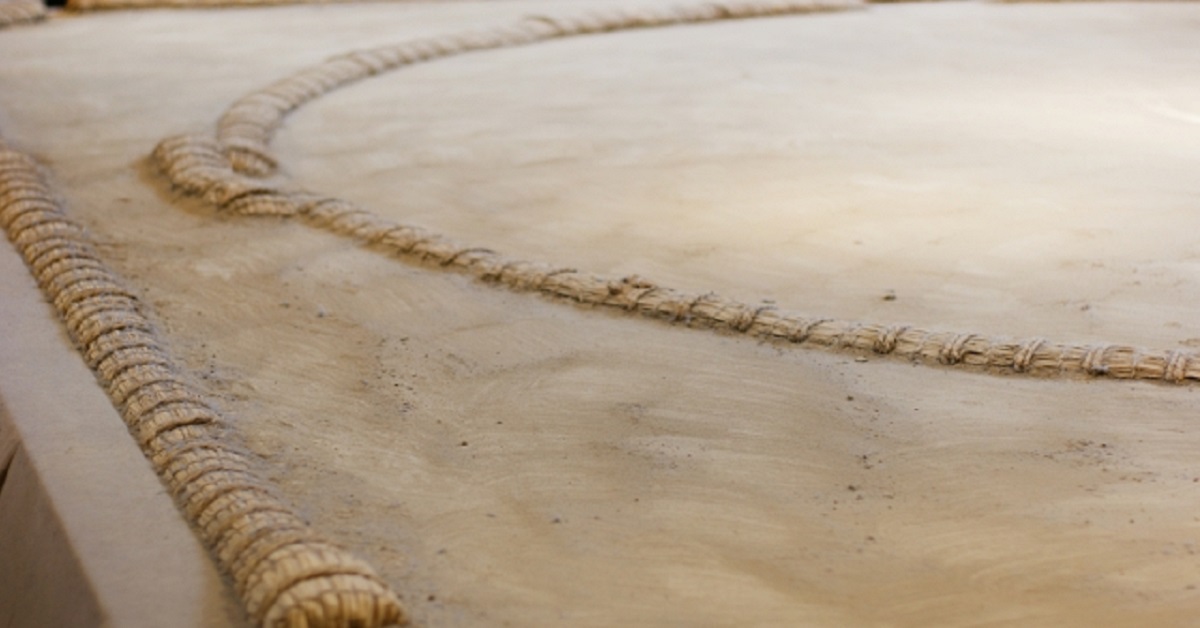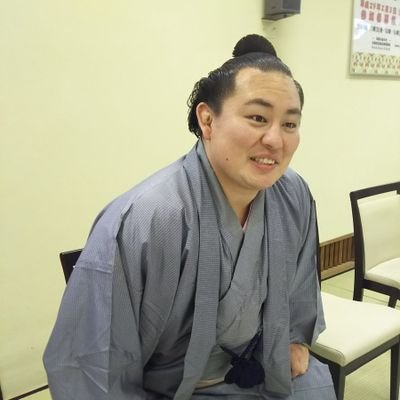If you look closely at a sumo ring, you’ll notice a band of white sand surrounding it. This sand, known as Janome, is not mere decoration—it plays a crucial role in recording wrestlers’ footprints and ensuring fair judgments.
It is one of Japan’s most remarkable traditions that beautifully combines functionality with aesthetics.
What Is Janome?
“Janome” refers to the white sand sprinkled around the outer edge of the sumo ring.
This sand serves a practical purpose — when a wrestler steps out of the ring, his footprint remains visible, allowing referees to determine whether or not he has stepped out.
The following table shows the structure of the dohyō and where the Janome is located.
| Part | Location | Material | Main Role |
|---|---|---|---|
| Central Ring | Center | Hardened clay | Where the match takes place |
| Tawara (rice-straw bales) | Boundary line | Straw | Marks the edge of the ring |
| Janome | Outside the tawara | White sand | Leaves footprints for judgment |
Janome is an essential feature that ensures the fairness and credibility of sumo matches.
The Role of Janome
The main function of Janome is to provide clear, physical evidence for determining the winner.
In close matches, when both wrestlers approach the edge of the ring, it can be extremely difficult to see who stepped out first. The footprints left in the Janome sand make this decision possible.
Referees and judges look closely at these prints to decide who exited the ring before the other.
Janome plays a vital role in various winning techniques, as shown below.
| Technique | Movement Involved | Role of Janome |
|---|---|---|
| Yorikiri (frontal force-out) | Pushing the opponent out | Shows whose foot stepped out first |
| Oshidashi (push-out) | Forcing the opponent out with the body | Indicates contact point of the foot |
| Sukui-nage (scoop throw) | Throwing motion | Determines if a foot stepped out before the throw |
| Hiki-otoshi (pull-down) | Pulling and toppling the opponent | Confirms if a foot left the ring before falling |
Through this, even the briefest moment in a match can be judged accurately and fairly.
Although modern sumo uses video replays, the sand prints in the Janome remain the most reliable and respected form of evidence.
The Origin of the Name “Janome”
The term “Janome” comes from the appearance and circular design of the sumo ring.
When viewed from above, the ring’s center and the white sand surrounding it resemble the pattern of a traditional Japanese umbrella called a Janome-gasa (snake-eye umbrella).
The Janome-gasa features concentric circular designs that represent harmony and balance, and the sumo ring shares this same aesthetic. The Janome encircles the sacred ring, much like the umbrella’s circular motif protecting its center.
| Comparison | Janome-gasa (Umbrella) | Janome (Sumo Ring) |
|---|---|---|
| Shape | Concentric pattern | Circular sand border |
| Purpose | Aesthetic and functional | Assists judgment and enhances appearance |
| Material | Paper and bamboo | Clay and white sand |
| Symbolism | Combines beauty and utility | Symbol of fairness and tradition |
Thus, Janome reflects the fusion of Japanese aesthetics and practicality — a concept deeply rooted in traditional culture.
Why Janome Is So Important
Without Janome, the wrestlers’ footprints would not be visible, making accurate and fair judgments nearly impossible.
Because sumo bouts can be decided in an instant, clear physical evidence is essential.
Janome also carries spiritual and cultural significance. The white sand represents purification and holiness, reminding spectators that the dohyō is a sacred space.
In this sense, white sand symbolizes purity, fairness, and sanctity — values central to sumo’s spirit.
| Purpose | Description | Effect |
|---|---|---|
| Judgment | Leaves clear footprints | Ensures fairness |
| Purification | Symbolic act of cleansing | Maintains sacred atmosphere |
| Aesthetic | Visually pleasing design | Creates an elegant impression |
Janome is not just a part of the ring — it is a cultural symbol embodying Japan’s sense of justice and spiritual beauty.
Maintenance and the Craftsmanship Behind Janome
After every match, Janome is meticulously restored to its pristine condition.
Special attendants called “Yobidashi” smooth the sand with bamboo rakes and brooms to prepare for the next bout. This ensures that every match begins under identical, fair conditions.
The sand itself is carefully chosen. It must be fine, bright, and slightly moist, so that footprints are clear but not distorted.
This delicate balance requires experience and intuition, and the yobidashi masters adjust the sand’s texture daily based on temperature and humidity.
| Step | Process | Purpose |
|---|---|---|
| 1 | Smooth the sand with a broom | Remove previous footprints |
| 2 | Rake the outer edge | Maintain perfect circular form |
| 3 | Check moisture | Ensure proper footprint clarity |
| 4 | Final inspection | Confirm uniform texture and shape |
This precise work demonstrates the unseen craftsmanship that upholds the integrity of sumo.
A Tradition That Resonates With Foreign Fans
Today, more and more visitors from around the world attend sumo tournaments.
For them, Janome represents the Japanese way of blending tradition, nature, and fairness.
While most modern sports rely on electronic or laser-based judging systems, sumo continues to rely on natural elements like sand — and yet maintains remarkable accuracy.
Foreign audiences often describe this as “a perfect harmony between simplicity and sophistication,” showing respect for Japan’s ability to preserve old traditions while maintaining competitive precision.
Janome is therefore both a judging tool and a living cultural artifact that captures the heart of Japanese aesthetics.
Conclusion
Janome is the white sand spread around the outer edge of the sumo ring, serving as a natural record of wrestlers’ footprints and ensuring fair, accurate results.
It also holds spiritual and aesthetic importance, symbolizing purity and harmony.
Each bout begins only after yobidashi have carefully leveled the sand — a ritual that reflects Japanese dedication to perfection and fairness.
When you watch a sumo match, look beyond the wrestlers’ power and technique.
Notice the delicate white ring of sand that surrounds the dohyō.
In that sand lies the soul of Japan’s national sport — a blend of discipline, artistry, and respect for tradition.





コメント